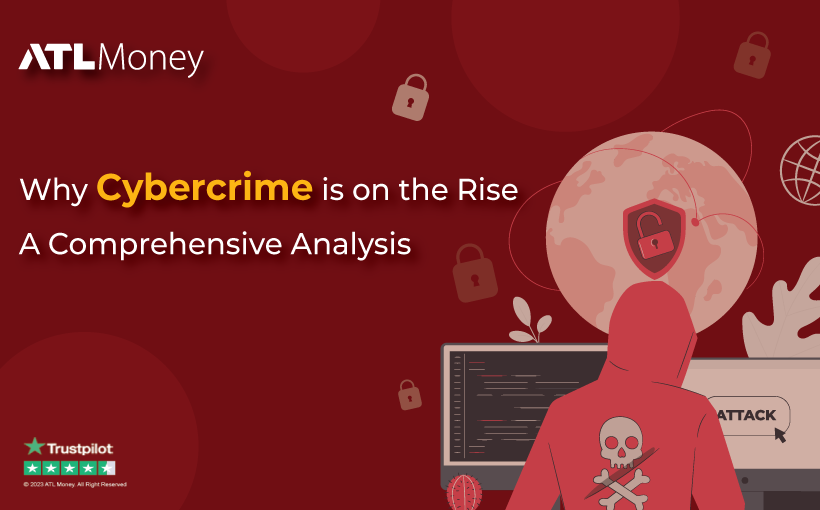In today’s interconnected world, the prevalence of cybercrime has reached alarming levels. Cybercriminals, armed with sophisticated techniques and malicious intent, continuously evolve their tactics to exploit vulnerabilities and compromise the security of individuals, businesses, and even nations. This comprehensive analysis delves deep into the reasons behind the rising tide of cybercrime, exploring the various factors contributing to its growth and the steps we can take to protect ourselves in this digital landscape.
1. Technological Advancements and Connectivity
1.1 The Internet of Things (IoT) and Expanded Attack Surface
The rapid advancement of technology has brought countless benefits to society, but it has also opened doors for cybercriminals. The proliferation of internet-connected devices, commonly referred to as the Internet of Things (IoT), has significantly expanded the attack surface for malicious actors. From smart home devices to industrial control systems, every connected device represents a potential entry point for cybercriminals seeking to exploit vulnerabilities and gain unauthorized access.
2. Financial Incentives
2.1 Exploiting Sensitive Financial Information
One of the primary driving forces behind the rise of cybercrime is the prospect of financial gain. As our lives become increasingly digitized, sensitive financial information, such as credit card details and online banking credentials, is stored and transmitted across various online platforms. Cybercriminals exploit this by employing tactics such as phishing, ransomware, and identity theft to obtain valuable data that can be sold on the dark web or used for financial fraud. The allure of substantial profits has attracted an influx of individuals with nefarious intent, contributing to the exponential growth of cybercrime.
3. Globalization and Digital Transformation
3.1 Interconnectedness and Exploiting Weak Links
The globalization of business and the ongoing digital transformation have created an interconnected ecosystem where data flows across borders and industries. While this interconnectedness brings efficiency and convenience, it also introduces new challenges. Cybercriminals can exploit vulnerabilities in global supply chains, cloud infrastructure, and cross-border data transfers to launch attacks on organizations worldwide. Moreover, the interconnected nature of our digital landscape enables cybercriminals to quickly adapt and share their tactics, leading to the rapid propagation of cyber threats.
4. Inadequate Cybersecurity Measures
4.1 Lack of Awareness and Complacency
Despite the increasing sophistication of cyber threats, many individuals and organizations have failed to implement robust cybersecurity measures. The lack of awareness, complacency, and inadequate investment in cybersecurity infrastructure have left countless systems and networks vulnerable to attacks. Additionally, the shortage of skilled cybersecurity professionals exacerbates the problem, as organizations struggle to find qualified experts capable of safeguarding their digital assets effectively.
5. Evolving Cybercriminal Techniques
5.1 Sophisticated Tactics and Constant Adaptation
Cybercriminals are continually honing their techniques to evade detection and exploit emerging vulnerabilities. They leverage advanced techniques like social engineering, zero-day exploits, and file-less malware to infiltrate systems without leaving a trace. The rapid evolution of cybercrime tactics poses a significant challenge for cybersecurity professionals and law enforcement agencies, as they must constantly adapt to keep pace with these sophisticated threats.
Protecting Ourselves: The Way Forward
While the rise of cybercrime may seem daunting, there are steps we can take to mitigate the risks and protect ourselves in this digital age. By adopting the following measures, we can enhance our online security:
1. **Education and Awareness**
Staying informed about the latest cyber threats and educating ourselves on best practices for online safety is crucial. Regularly updating our knowledge and sharing this information with friends, family, and colleagues can create a more resilient digital community.
2. **Strong Passwords and Multi-Factor Authentication**
Using unique, complex passwords for each online account and enabling multi-factor authentication whenever possible adds an extra layer of security. Multi-factor authentication requires a second form of verification, such as a fingerprint or one-time password, reducing the risk of unauthorized access.
3. **Regular Software Updates**
Keeping all devices and software up to date with the latest security patches is essential. Software updates often include critical bug fixes that address vulnerabilities, safeguarding against known cyber threats.
4. **Network and Device Security**
Implementing robust network security measures, such as firewalls and intrusion detection systems, can help protect against unauthorized access. Additionally, ensuring that devices have up-to-date antivirus software and enabling built-in security features further fortifies our defenses.
5. **Data Encryption and Backups**
Encrypting sensitive data and regularly backing up important files are vital steps in minimizing the impact of a cyber-attack. Encryption makes it challenging for cybercriminals to access and misuse data, while backups ensure that valuable information remains accessible even in the event of a security breach.
Conclusion
The rise of cybercrime poses significant challenges in our digitally-driven society. By understanding the factors contributing to its growth and implementing effective cybersecurity measures, we can mitigate the risks and protect ourselves against this evolving threat landscape. Education, awareness, and proactive security practices are crucial in safeguarding our digital lives and maintaining a secure online environment.
If you want to send money abroad, download the ATLMoney app to get started. Easy & Fast international transfer at your fingertips.
